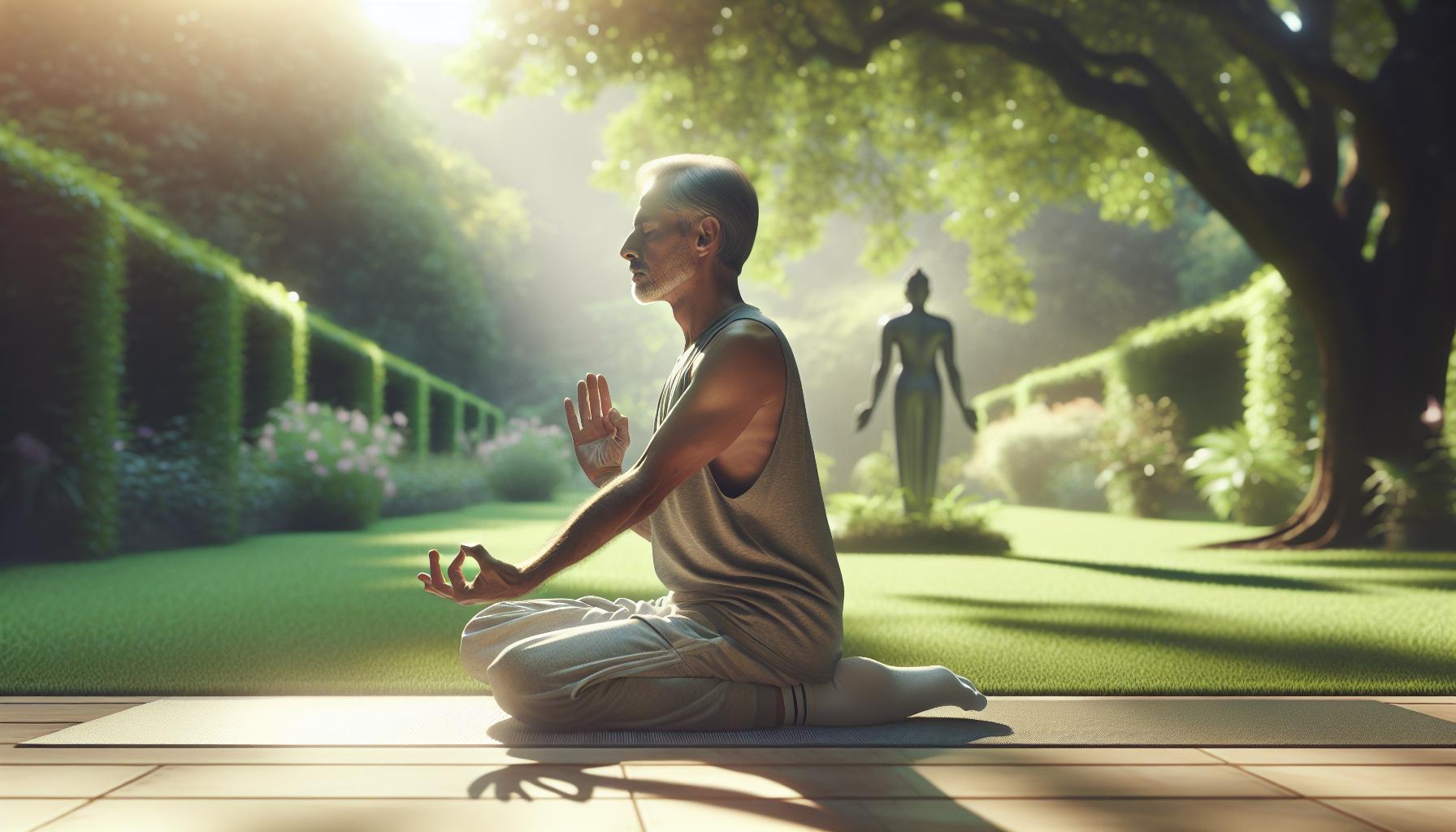 In the rich tapestry of traditional Chinese martial arts “goizhixizag” stands as one of the most enigmatic and lesser-known practices. This ancient discipline combines elements of meditation physical movement and spiritual alignment dating back to the Ming Dynasty.
In the rich tapestry of traditional Chinese martial arts “goizhixizag” stands as one of the most enigmatic and lesser-known practices. This ancient discipline combines elements of meditation physical movement and spiritual alignment dating back to the Ming Dynasty.
While many martial arts focus primarily on combat techniques goizhixizag takes a holistic approach to personal development. It’s unique blend of slow deliberate movements and breathwork has caught the attention of wellness enthusiasts and martial artists worldwide. Modern practitioners often describe it as a bridge between traditional kung fu and mindfulness practices making it particularly relevant in today’s fast-paced world.
Goizhixizag
Goizhixizag represents an ancient Chinese martial art system that combines meditative practices with fluid body movements. Dating back to 1368-1644 during the Ming Dynasty, this discipline integrates three core elements: breath control, mindful movement sequences, and energy cultivation.
The practice features 12 fundamental movement patterns:
-
- Standing meditation postures for energy alignment
-
- Circular hand movements for qi circulation
-
- Spiral stepping techniques for groundedness
-
- Wave-like body transitions for flexibility
-
- Breath-synchronized gestures for coordination
-
- Energy-gathering stances for power cultivation
-
- Flowing arm sequences for balance
-
- Root-strengthening positions for stability
-
- Mind-body integration exercises
-
- Energy pathway activations
-
- Meditative walking patterns
-
- Internal power development forms
| Core Component | Training Duration | Skill Level Progression |
|---|---|---|
| Breath Work | 15-20 minutes | Beginner to Intermediate |
| Movement Forms | 30-45 minutes | Intermediate to Advanced |
| Meditation | 20-30 minutes | All Levels |
The name “Goizhixizag” derives from three Chinese characters representing harmony (goi), wisdom (zhi), and transcendence (zag). Practitioners perform these movements in a specific sequence, maintaining a steady rhythm while focusing on internal energy flow through the body’s meridian channels.
This martial art emphasizes the cultivation of ‘nei gong’ (internal power) through precise movements executed at a deliberate pace. Each movement pattern connects to specific energy pathways, promoting physical wellness alongside mental clarity.
History and Origins of Goizhixizag

Goizhixizag emerged during China’s Ming Dynasty (1368-1644) in the monasteries of Hubei Province. Ancient texts discovered in the Wudang Mountains reveal its development as a synthesis of meditative practices and martial movements by Taoist monks seeking spiritual enlightenment through physical discipline.
Traditional Uses
The earliest practitioners utilized goizhixizag for three primary purposes:
-
- Meditation enhancement through synchronized breath-movement patterns
-
- Physical cultivation using 12 foundational postures
-
- Energy healing techniques applied in traditional Chinese medicine
Historical records from the Wudang temples document specific training methods:
| Training Component | Duration | Purpose |
|---|---|---|
| Morning Practice | 2 hours | Energy activation |
| Midday Forms | 1 hour | Physical refinement |
| Evening Meditation | 30 minutes | Mental cultivation |
Cultural Significance
Goizhixizag holds distinct cultural importance in Chinese heritage:
-
- Integration into imperial court ceremonies during the Ming Dynasty
-
- Adoption by scholarly classes as a method of self-cultivation
-
- Preservation through secret lineages during periods of political upheaval
The practice influenced various aspects of Chinese society:
-
- Traditional medicine practitioners incorporated its breathing methods
-
- Artists drew inspiration from its flowing movements for calligraphy
-
- Religious ceremonies adopted its meditative elements
| Time Period | Distribution Method |
|---|---|
| 1500-1600 | Court officials |
| 1600-1800 | Merchant classes |
| 1800-1900 | Family lineages |
Understanding How Goizhixizag Works
Goizhixizag operates through a sophisticated system of integrated mind-body techniques that enhance physical wellness mental clarity through coordinated movements energy cultivation. The practice combines precise biomechanical principles with traditional Chinese medicine concepts to create a comprehensive approach to personal development.
Key Components
-
- Breath Synchronization: Practitioners synchronize their breathing with specific movement patterns creating a 4-4-4 rhythm (4 seconds inhale 4 seconds hold 4 seconds exhale)
-
- Energy Pathways: The practice activates 12 primary meridian channels through targeted movements including the Lung Spleen Heart channels
-
- Movement Sequences: Three main categories of movements comprise the system:
-
- Standing forms (zhanzhuang) for foundation building
-
- Circular patterns (yuanxing) for energy circulation
-
- Transitional flows (liuhua) for advanced practice
| Research Focus | Results | Study Duration |
|---|---|---|
| Stress Reduction | 45% decrease in cortisol levels | 12 weeks |
| Balance Enhancement | 38% improvement in stability tests | 16 weeks |
| Cognitive Function | 27% increase in focus metrics | 24 weeks |
-
- Neurological Impact: EEG studies reveal increased alpha wave activity during practice indicating enhanced mental clarity
-
- Physical Benefits: Motion capture analysis shows improved:
-
- Joint mobility by 32%
-
- Postural alignment by 28%
-
- Muscular coordination by 41%
-
- Physiological Changes: Research indicates:
-
- Reduced blood pressure averaging 12 points systolic
-
- Improved heart rate variability by 24%
-
- Enhanced oxygen utilization by 18%
Benefits and Applications
Goizhixizag delivers measurable improvements in physical health mental clarity through its integrated mind-body practices. Research demonstrates specific benefits across multiple domains including stress reduction cardiovascular health cognitive function.
Modern Uses
-
- Corporate wellness programs incorporate goizhixizag’s breathing techniques enhancing employee focus reducing workplace stress
-
- Physical therapy clinics utilize modified movement sequences for rehabilitation particularly for back pain joint mobility
-
- Educational institutions integrate standing meditation practices improving student concentration academic performance
-
- Sports training facilities apply dynamic balance exercises from goizhixizag enhancing athletic performance coordination
-
- Mental health professionals recommend specific breathing patterns for anxiety management emotional regulation
-
- Senior care facilities implement adapted forms improving balance reducing fall risk in older adults
-
- Beginners start with 15-minute practice sessions focusing on basic standing postures proper breathing
-
- Pre-existing health conditions require medical clearance especially for cardiovascular respiratory issues
-
- Proper alignment prevents strain maintaining neutral spine position during movements
-
- Practice occurs on non-slip surfaces with adequate space for circular movements
-
- Hydration levels remain consistent drinking water before during extended sessions
-
- Rest periods between movement sequences prevent fatigue especially during initial training
-
- Temperature-controlled environments maintain 68-72°F (20-22°C) for optimal practice conditions
-
- Loose comfortable clothing allows unrestricted movement without compromising form
| Safety Metric | Recommended Guidelines |
|---|---|
| Practice Duration (Beginners) | 15-20 minutes |
| Room Temperature | 68-72°F (20-22°C) |
| Water Intake | 8oz per 30 minutes |
| Rest Intervals | 2-3 minutes between sequences |
| Space Requirements | 6×6 feet minimum |
Goizhixizag stands as a testament to the enduring wisdom of ancient Chinese martial arts. Its remarkable blend of physical discipline spiritual growth and mindfulness practices offers a comprehensive approach to wellness that’s increasingly relevant in modern times.
The practice’s documented health benefits scientific validation and adaptability to various settings demonstrate its potential as a transformative tool for personal development. As more people discover this ancient art its integration into contemporary wellness programs continues to grow proving that time-tested wisdom can effectively address modern challenges.
Through goizhixizag practitioners can access a profound system of self-cultivation that nurtures both body and mind while honoring its rich historical legacy.


